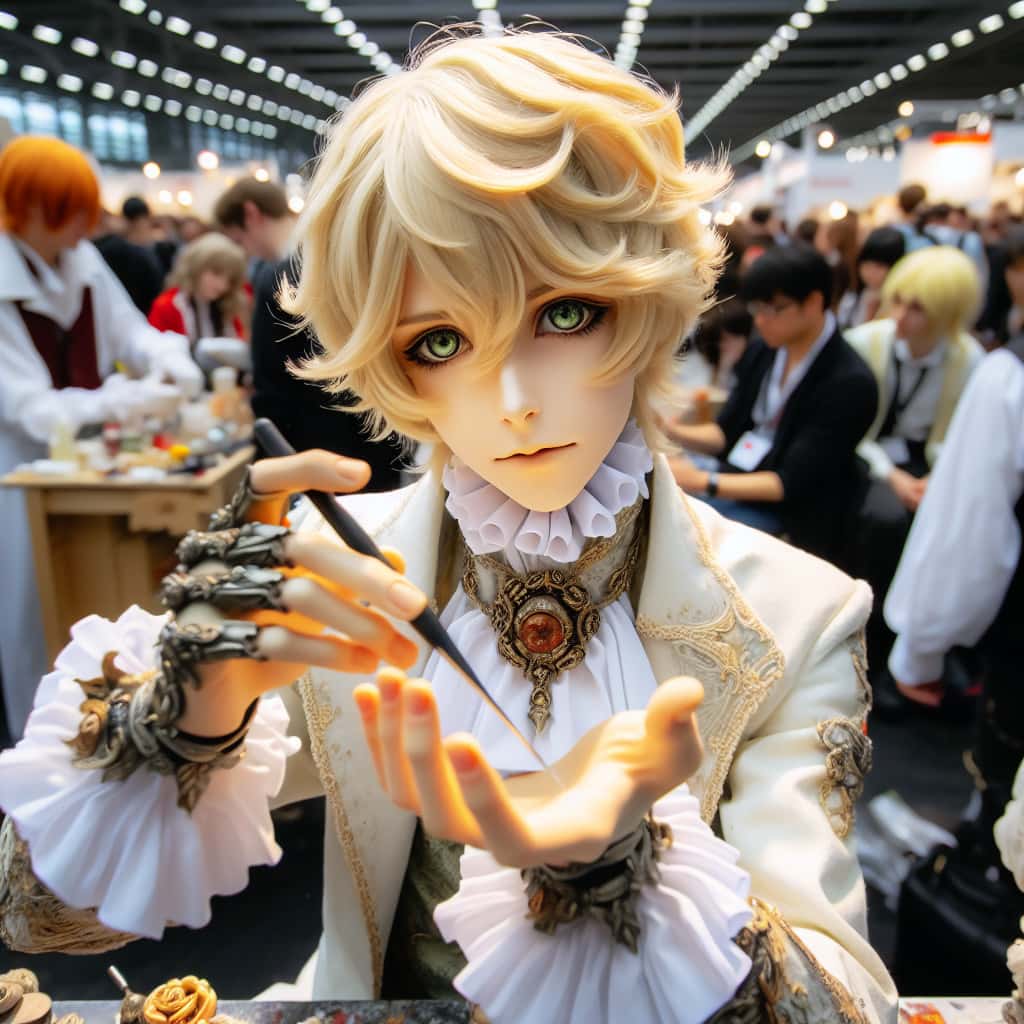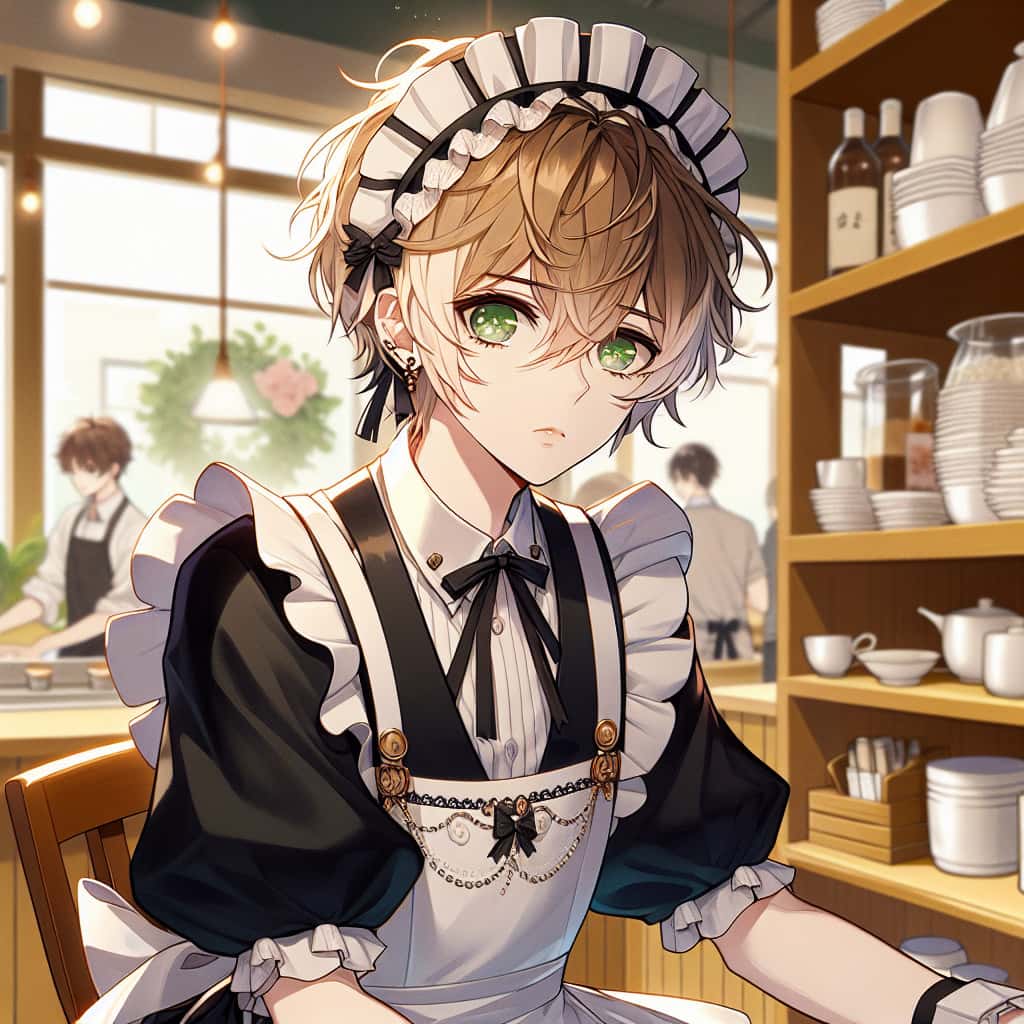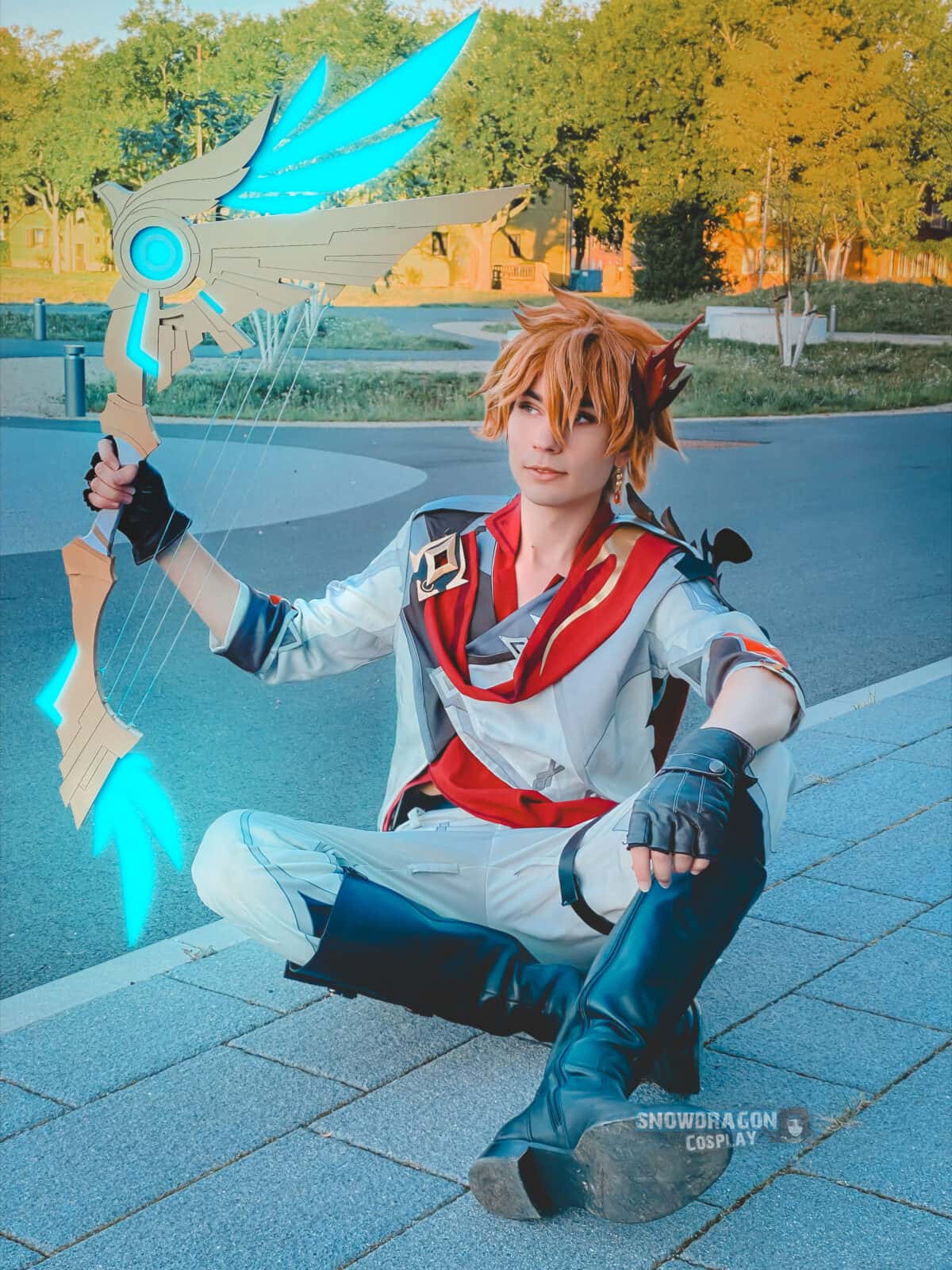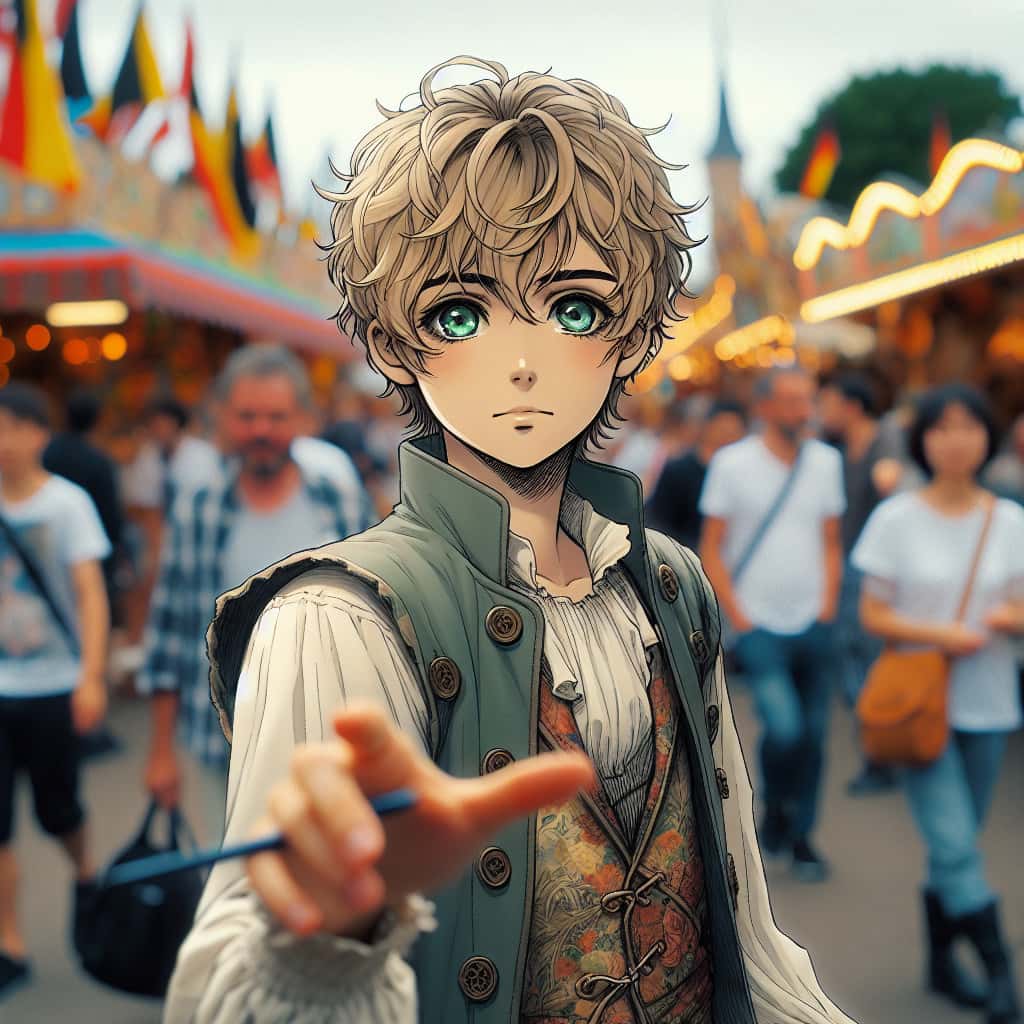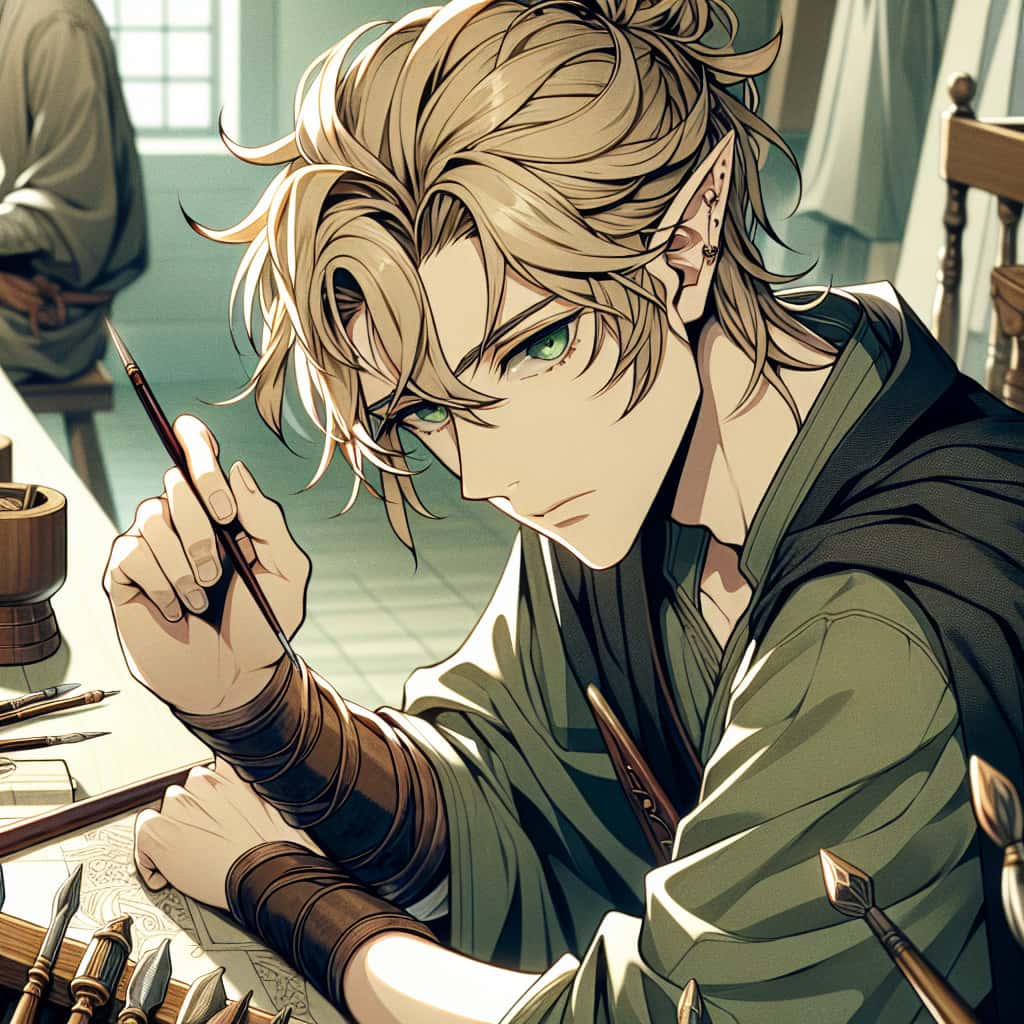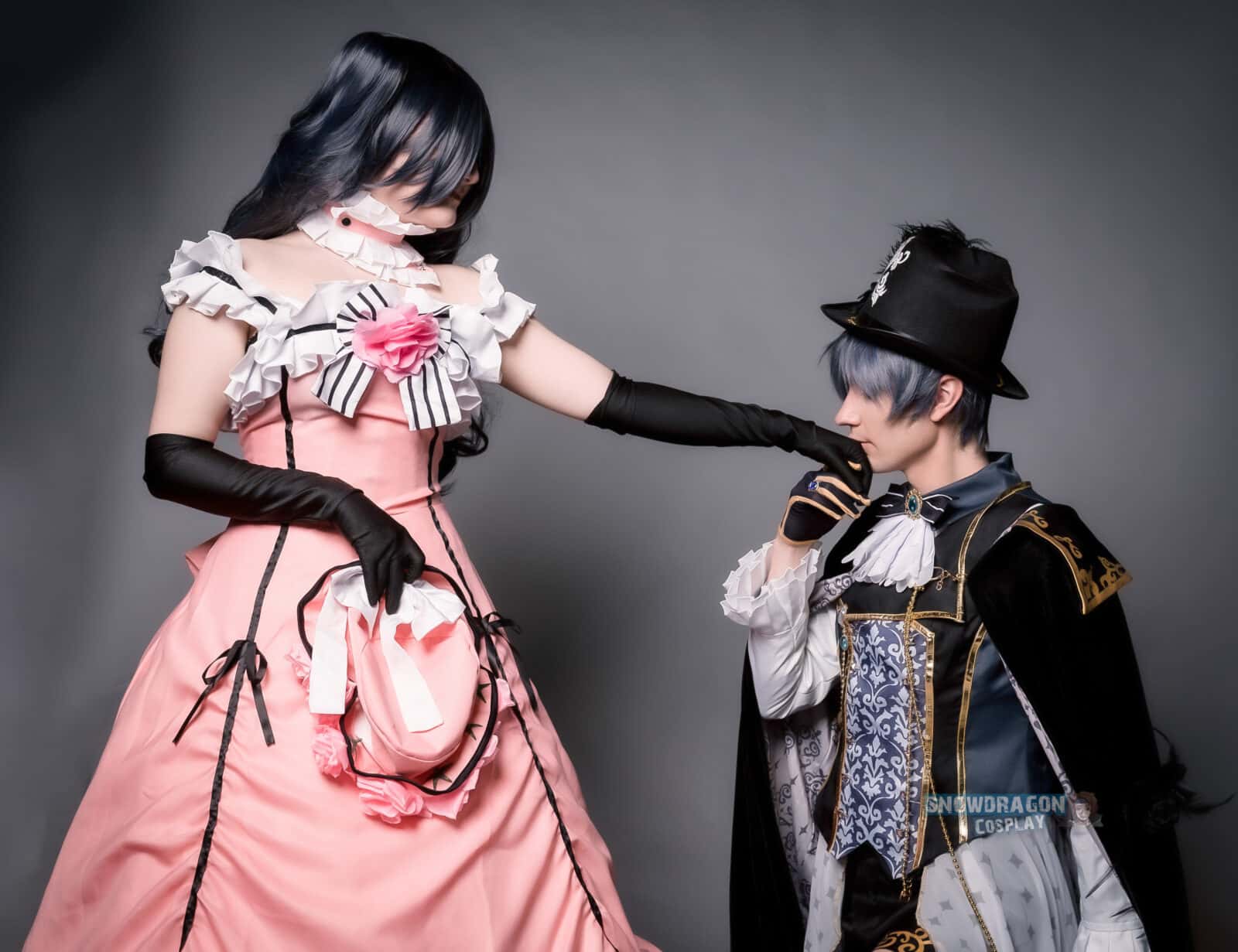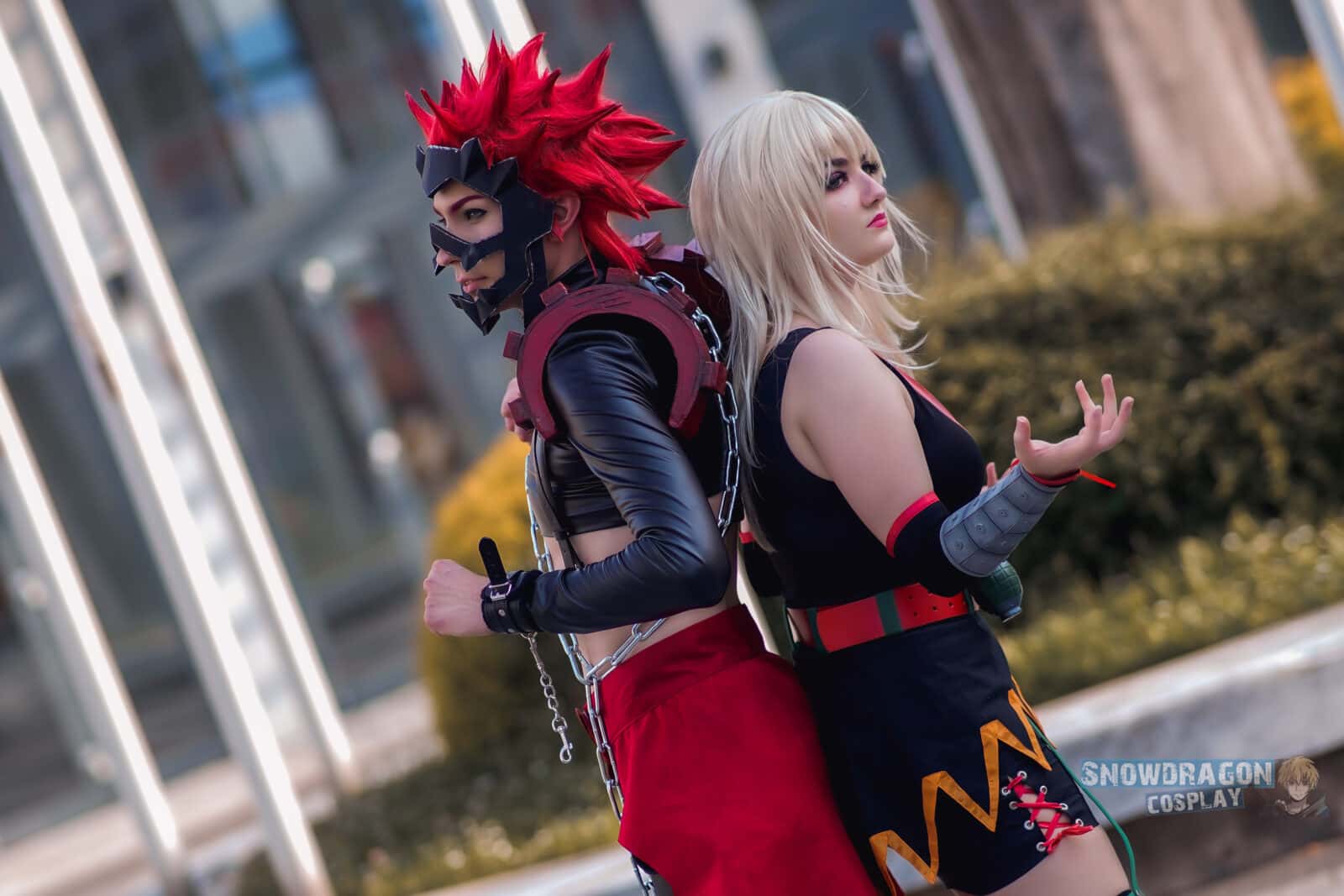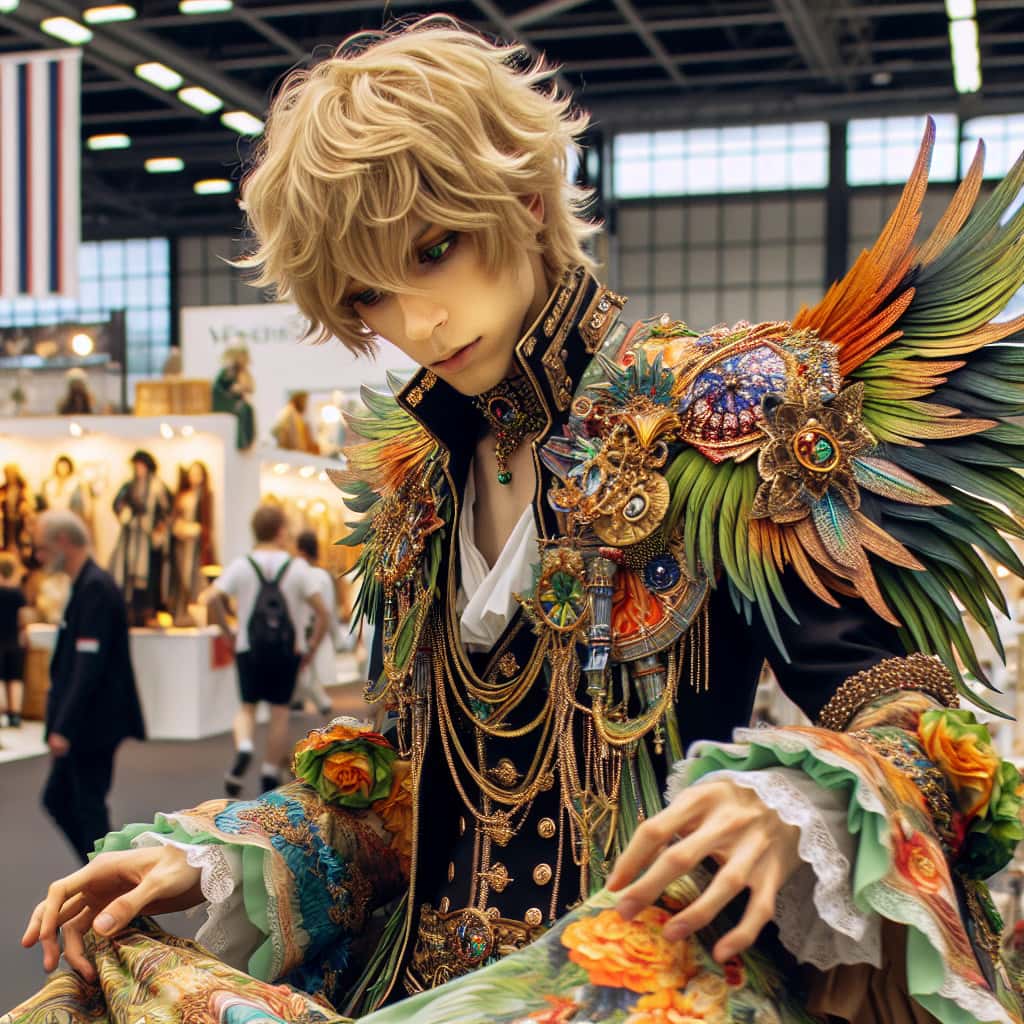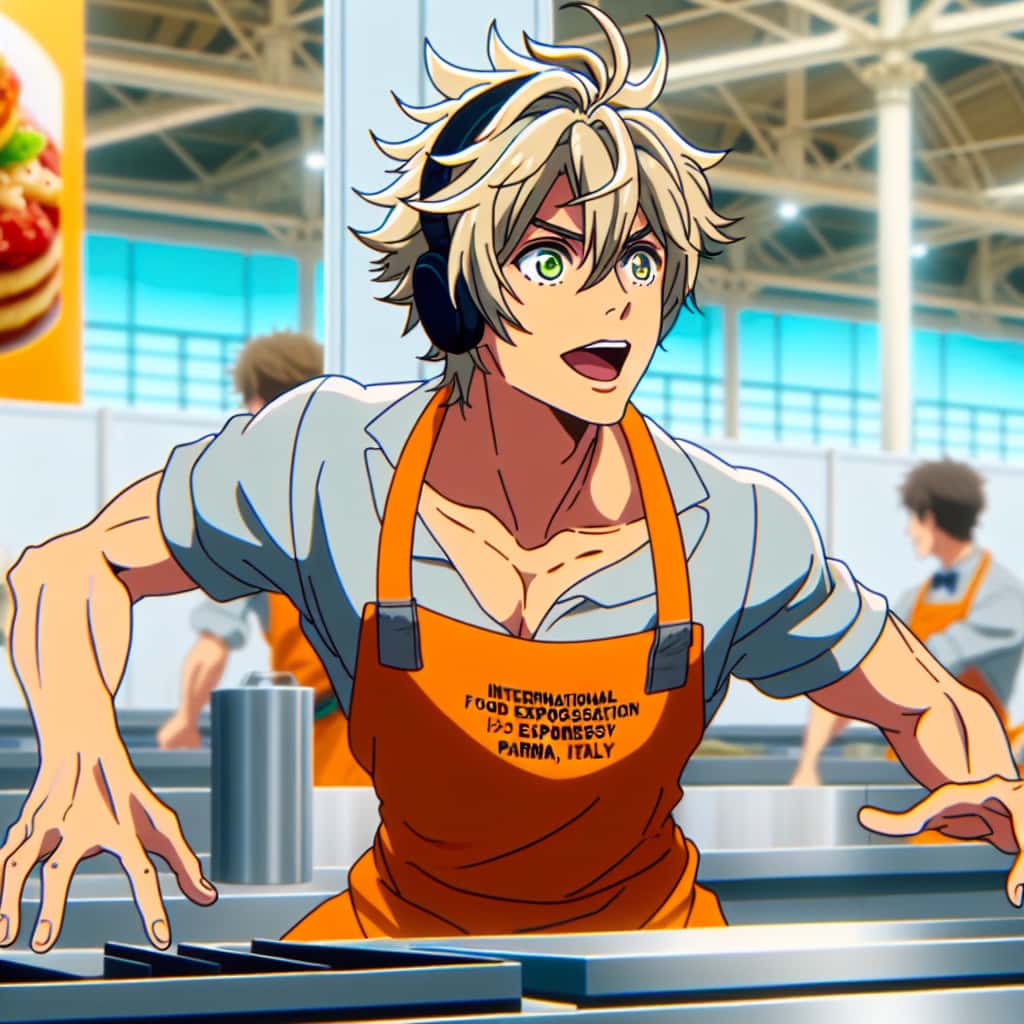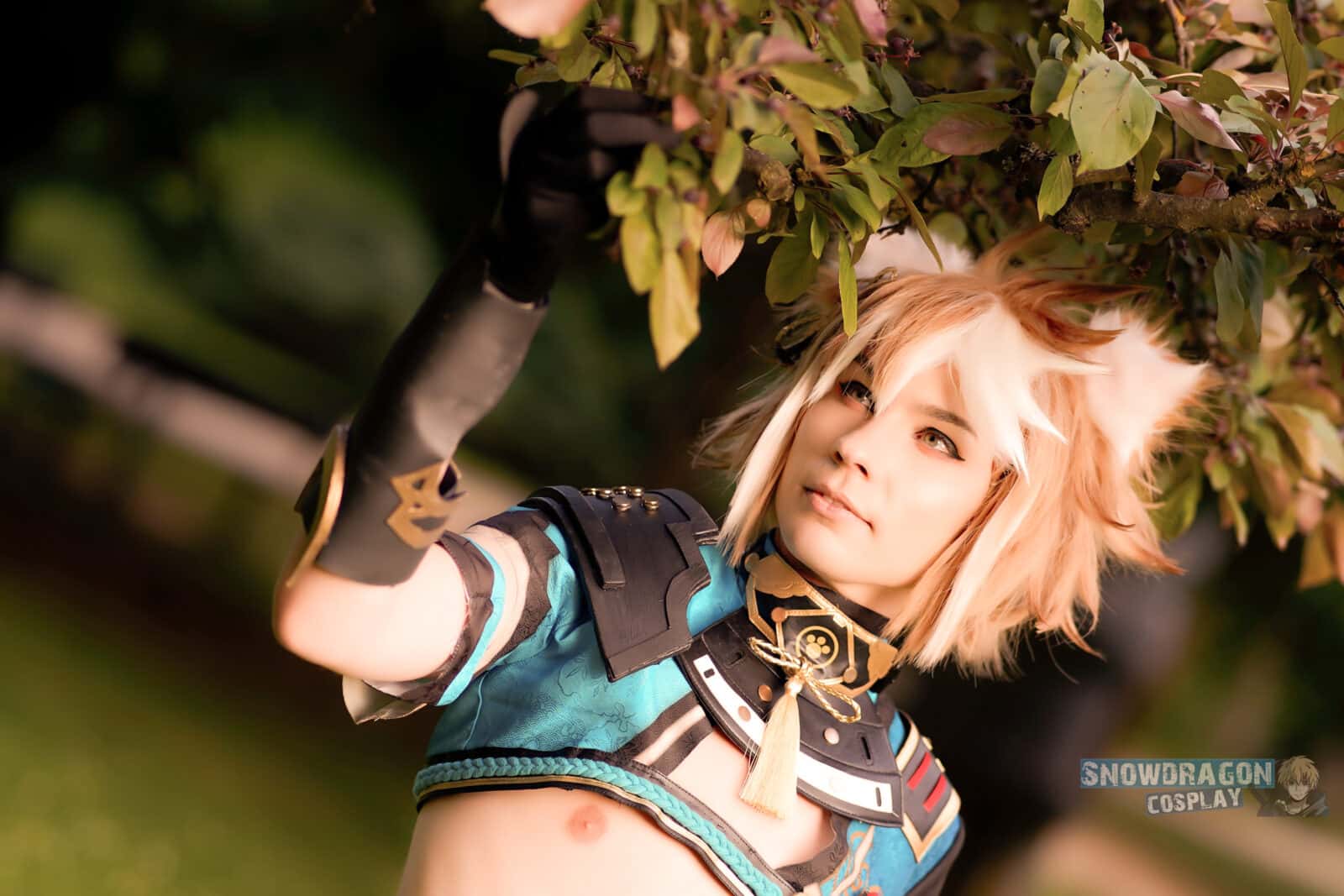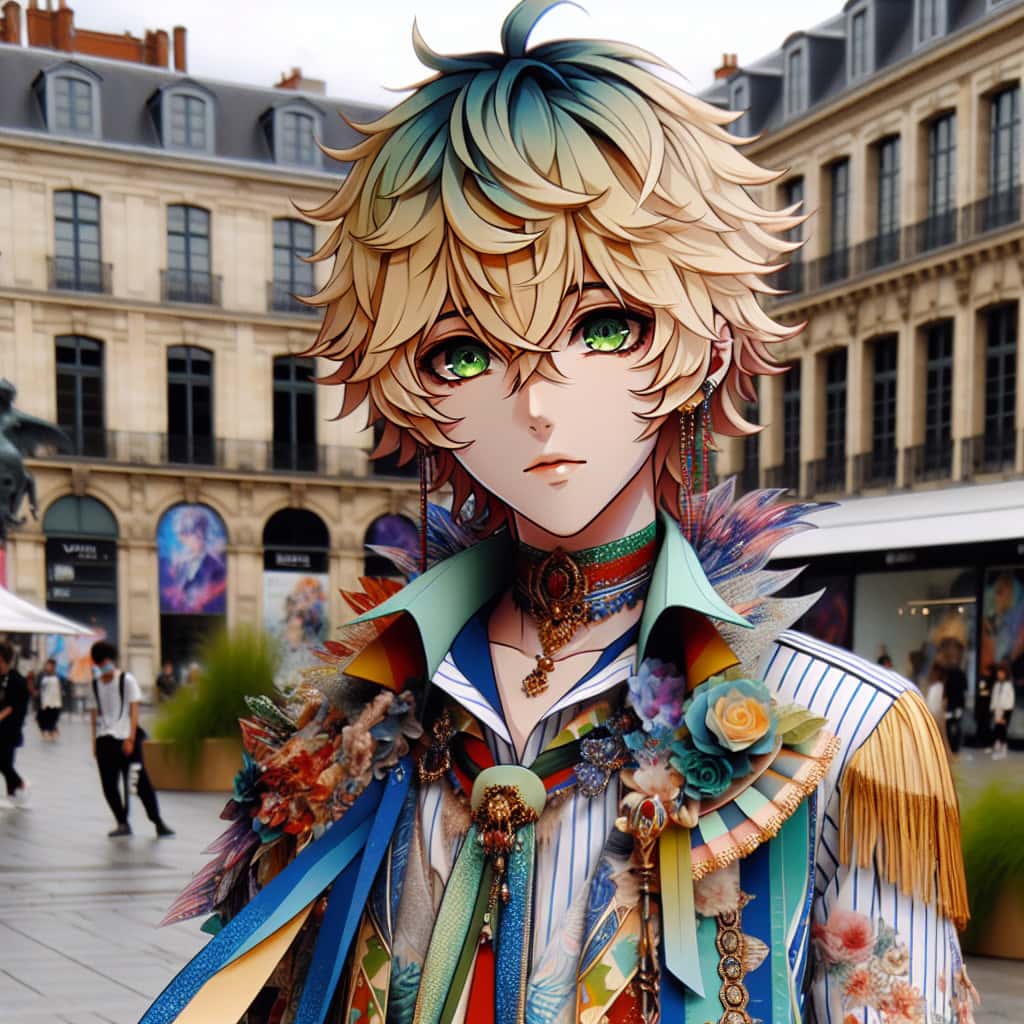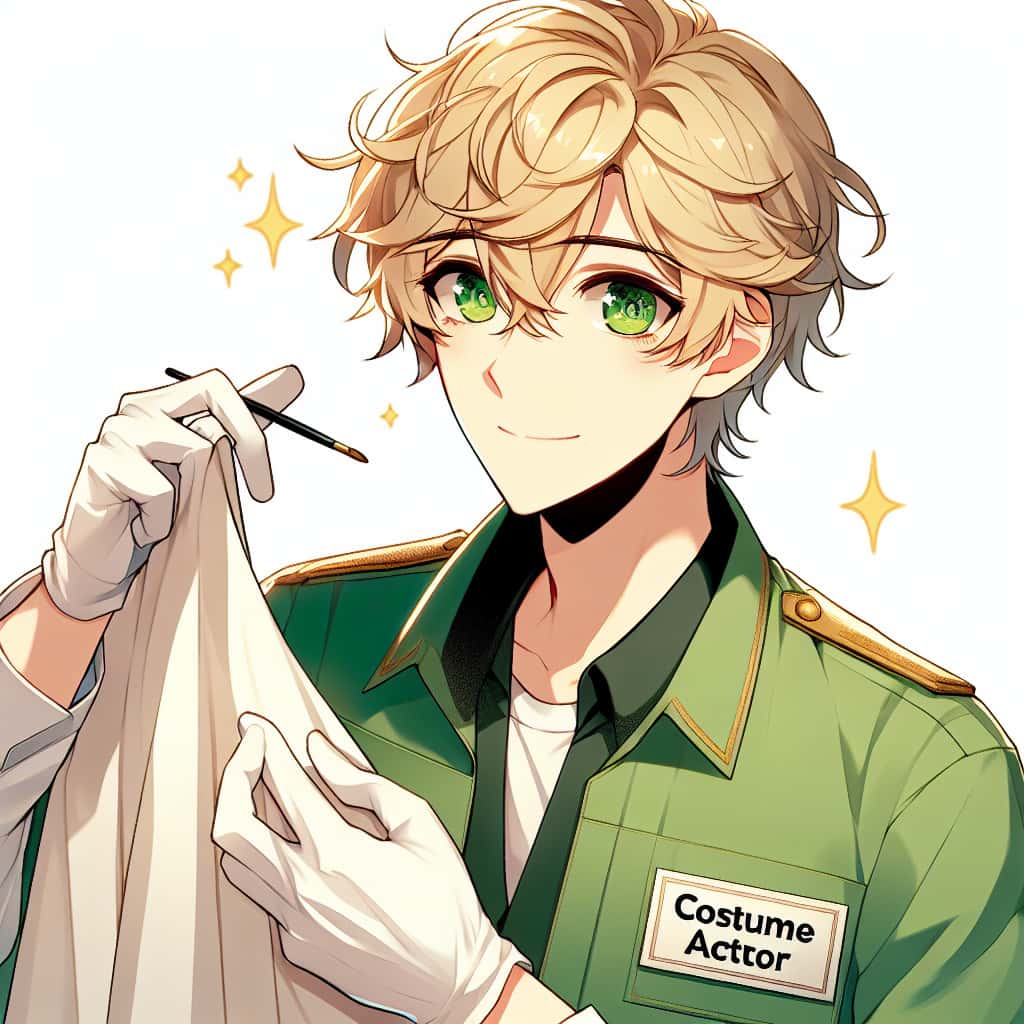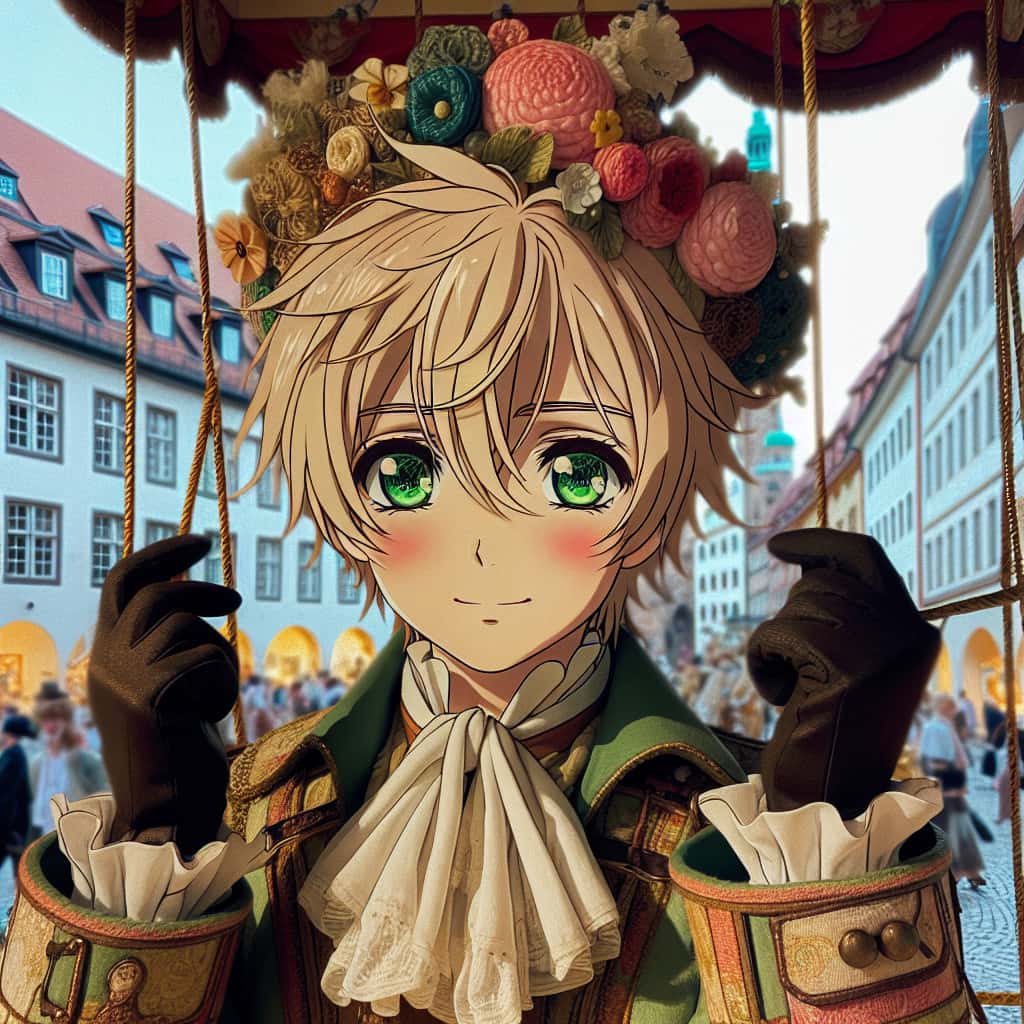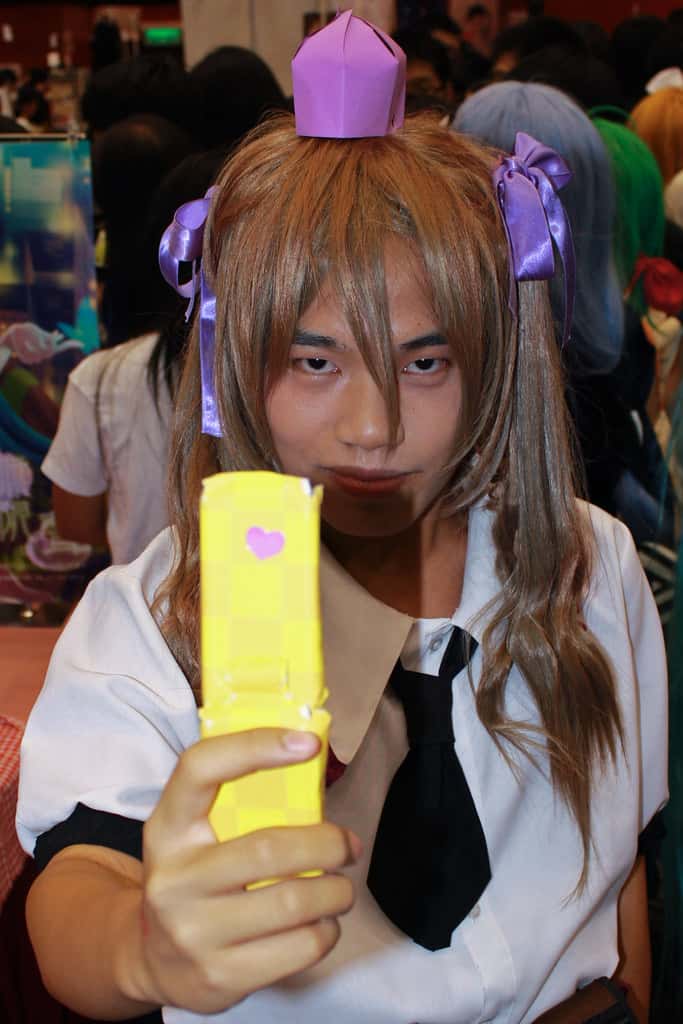
[Sassy_Follow_Icons]
1. What is the definition of a cosplayer?
A cosplayer is someone who takes their love for fictional characters to the next level by dressing up as them and embodying their personality and mannerisms. It’s like Halloween, but on steroids! Cosplayers meticulously recreate the costumes, hairstyles, and accessories of their favorite characters with incredible attention to detail. They also often attend conventions and events where they can showcase their creations and meet other like-minded individuals.
Cosplaying is not just about wearing a costume; it’s about becoming the character and bringing them to life. It requires creativity, craftsmanship, and a passion for storytelling. Cosplayers are essentially living works of art, walking among us in a world where fantasy meets reality.
2. When did the concept of cosplay first emerge?
The concept of cosplay can be traced back to the 1930s in America, where fans would dress up as characters from science fiction novels at science fiction conventions. However, it wasn’t until the 1970s that cosplay really took off in Japan with the rise of anime and manga fandom.
[publishpress_authors_box layout="ppma_boxes_890427"]
In Japan, cosplay became popular at events such as Comiket (Comic Market), where fans would gather to buy and sell self-published comics known as doujinshi. These events provided a platform for cosplayers to showcase their costumes and connect with others who shared their passion.
Over time, cosplay has evolved into a global phenomenon, with conventions and events dedicated solely to celebrating this unique form of self-expression. It has become an integral part of pop culture, attracting people from all walks of life who want to pay homage to their favorite characters.
3. How has the perception of cosplayers changed over time?
In the early days of cosplay, many people viewed it as a niche hobby reserved for hardcore fans or “geeks.” Cosplayers were often seen as eccentric and out of touch with reality. However, as cosplay gained more visibility and acceptance, the perception of cosplayers has shifted dramatically.
Today, cosplayers are recognized as talented artists and dedicated fans who bring joy and entertainment to conventions and events. They are admired for their creativity, craftsmanship, and ability to transform themselves into beloved characters. Cosplay has become a respected form of self-expression that allows individuals to showcase their skills and passion for storytelling.
Cosplayers have also gained recognition outside of the convention scene. They are often invited to appear at promotional events, collaborate with brands, or even compete in international cosplay competitions. This newfound appreciation for cosplayers has helped break down stereotypes and showcase the incredible talent within the community.
4. What motivates individuals to become cosplayers?
The motivations behind becoming a cosplayer can vary greatly from person to person. For some, it’s simply a way to express their love for a particular character or fandom. They enjoy the process of researching, designing, and creating costumes that faithfully represent their favorite fictional worlds.
Others are drawn to the performative aspect of cosplay. They relish the opportunity to step into the shoes of their favorite characters and bring them to life through acting, posing for photoshoots, or participating in skits at conventions.
For many cosplayers, it’s also about connecting with like-minded individuals who share their passion for pop culture. Conventions provide a sense of community where they can meet fellow fans, make friends, and geek out together over shared interests.
Ultimately, what motivates individuals to become cosplayers is a combination of creativity, fandom dedication, social interaction, and the thrill of embodying beloved characters. It’s an outlet for self-expression that allows them to showcase their skills while immersing themselves in a world where fantasy becomes reality.
1. What is the definition of a cosplayer?
Definition
A cosplayer is an individual who engages in the practice of dressing up as a character from a work of fiction, typically from anime, manga, video games, or other forms of popular media. Cosplayers often meticulously recreate the costumes and accessories of their chosen characters and may also adopt their mannerisms and behaviors to fully embody the character they are portraying.
Types of Cosplayers
There are various types of cosplayers, each with their own motivations and approaches to the hobby. Some cosplayers focus on accuracy and strive to recreate every detail of their chosen character’s appearance, while others take a more creative approach and put their own spin on the character’s design. Additionally, there are professional cosplayers who make a living through their craft by attending conventions, participating in photo shoots, or creating content for social media platforms.
Examples
– Accuracy-focused cosplayer: This type of cosplayer meticulously researches every aspect of their chosen character’s costume and strives to recreate it with utmost precision. They pay attention to even the smallest details such as fabric choices, stitching techniques, and accessories.
– Creative cosplayer: These individuals enjoy putting their own unique twist on characters by incorporating different elements or interpretations into their costumes. They may experiment with different materials or styles to create a fresh take on familiar characters.
– Professional cosplayer: Some individuals have turned cosplay into a full-time career. They often have a large following on social media platforms, collaborate with brands for promotional events or product endorsements, and may even create original designs inspired by popular characters.
Overall, the definition of a cosplayer encompasses anyone who embraces the art form of dressing up as fictional characters from various forms of media.
2. When did the concept of cosplay first emerge?
Origins
The concept of cosplay, short for “costume play,” is believed to have originated in Japan in the 1970s. It emerged alongside the rise of manga, anime, and science fiction conventions in the country. The first recorded instance of cosplay can be traced back to a science fiction convention called “Nihon SF Taikai” held in 1978, where attendees dressed up as characters from popular science fiction works.
Influence of Anime and Manga
Cosplay gained further popularity with the increasing influence of anime and manga on Japanese pop culture. As fans became more invested in these mediums, they began to express their love for the characters by dressing up as them at conventions and events. This practice gradually spread beyond Japan’s borders and became a global phenomenon.
Impact on Pop Culture
Today, cosplay has become an integral part of pop culture and is celebrated at various conventions and events worldwide. It has evolved into a creative outlet for fans to showcase their passion for their favorite fictional characters while also providing a platform for artistic expression and community building.
3. How has the perception of cosplayers changed over time?
Early Stigma
In its early years, cosplaying was often stigmatized or dismissed as a niche hobby pursued by individuals who were seen as overly obsessed with fictional worlds. Many outsiders failed to understand the dedication and craftsmanship that goes into creating intricate costumes or embodying beloved characters.
Mainstream Acceptance
However, over time, the perception of cosplayers has undergone a significant shift. With the growth of social media platforms like Instagram and YouTube, cosplayers now have greater visibility and reach larger audiences than ever before. This increased exposure has helped showcase the talent, creativity, and dedication that cosplayers bring to their craft.
Recognition and Respect
Cosplayers are now recognized as skilled artists and performers, admired for their ability to bring beloved characters to life. They are often invited as guests to conventions, participate in panels, and even collaborate with official licensors of the characters they cosplay. The wider public has come to appreciate the artistry and passion that goes into cosplaying, leading to greater acceptance and respect for the community.
Challenges Remain
Despite these positive changes, challenges still exist. Some individuals may hold misconceptions about cosplayers or view them through stereotypes perpetuated by media portrayals. Additionally, certain cosplayers may face criticism or harassment online. However, overall, the perception of cosplayers has become more positive and inclusive as society recognizes the talent and dedication within the community.
4. What motivates individuals to become cosplayers?
4.1 Passion for a particular fandom
One of the main motivations for individuals to become cosplayers is their passion for a particular fandom. Whether it’s an anime, video game, comic book, or movie series, cosplayers often choose characters that they deeply admire and connect with. They are driven by their love for these fictional worlds and want to bring these characters to life through their costumes and performances.
4.2 Creativity and self-expression
Cosplay provides a unique outlet for creativity and self-expression. Many individuals are drawn to cosplay because it allows them to showcase their artistic skills in costume creation, prop-making, and makeup application. Through the process of designing and constructing their costumes, cosplayers can express their individuality and create something truly unique.
4.3 Community and camaraderie
The cosplay community is known for its strong sense of camaraderie and support. For many individuals, becoming a cosplayer means joining a welcoming community of like-minded people who share similar interests and passions. The opportunity to bond with others over shared fandoms, attend conventions together, and collaborate on group cosplays can be a motivating factor for individuals to get involved in cosplay.
5. Can dressing up as fictional characters be considered a form of self-expression?
Dressing up as fictional characters can absolutely be considered a form of self-expression. Cosplay allows individuals to embody the traits, personalities, and aesthetics of their favorite characters in a tangible way. By carefully selecting costumes that resonate with them on a personal level, cosplayers are able to express different aspects of their own identities or explore new personas.
This form of self-expression extends beyond just wearing the costume. Cosplayers often put great effort into portraying the character accurately through their mannerisms, poses, and interactions with others. They may also incorporate personal touches or modifications to their costumes to reflect their own interpretation of the character.
Furthermore, cosplay can serve as a platform for individuals to challenge societal norms and expectations. By embracing characters from diverse backgrounds, genders, or body types, cosplayers can promote inclusivity and celebrate different forms of beauty and representation.
6. Are there any notable cosplayers who have gained recognition for their work?
6.1 Yaya Han
Yaya Han is one of the most well-known and influential cosplayers in the community. She has been cosplaying since 1999 and has gained recognition for her intricate craftsmanship and attention to detail in her costumes. Yaya Han has also worked as a cosplay model, judge, and ambassador for various conventions.
6.2 Jessica Nigri
Jessica Nigri is another notable cosplayer who rose to fame through her vibrant and charismatic portrayals of video game characters. Her creative interpretations and stunning costumes have garnered a large following on social media platforms.
6.3 Kamui Cosplay
Kamui Cosplay, composed of Svetlana Quindt and Benni Schfer, is renowned for their expertise in armor-making and prop-building. They have authored several instructional books on cosplay crafting techniques and offer tutorials on their website.
Note: There are numerous other talented cosplayers who have made significant contributions to the community but could not be mentioned due to space limitations.
7. What are some common misconceptions about cosplayers?
- Misconception 1: Cosplayers are just attention-seekers. In reality, many cosplayers participate in events and conventions to share their love for a particular fandom and connect with like-minded individuals.
- Misconception 2: Cosplay is only for young people. In truth, cosplayers come from diverse age groups, ranging from teenagers to adults. Age is not a barrier when it comes to enjoying and participating in cosplay.
- Misconception 3: Cosplay is expensive. While some cosplays can be costly due to the intricacy of the costumes or props, there are also budget-friendly options available. Many cosplayers utilize their creativity and resourcefulness to create impressive costumes without breaking the bank.
- Misconception 4: Cosplayers are all introverted or socially awkward. While cosplay can attract individuals who may feel more comfortable expressing themselves through characters, the community is made up of people with varying personalities and social skills.
8. How do cosplayers prepare for conventions or events?
Cosplayers put significant time and effort into preparing for conventions or events where they can showcase their costumes. The preparation process typically involves several key steps:
8.1 Costume planning
Cosplayers research and select characters they want to cosplay as well as specific versions or designs of those characters. They gather reference images, study details of the costume, and plan out how they will recreate it.
8.2 Costume creation
Cosplayers then begin creating their costumes by sewing garments, crafting props, styling wigs, and applying makeup if necessary. This stage often involves learning new skills or techniques related to costume construction.
8.3 Fitting and adjustments
Once the costume is complete or nearing completion, cosplayers try it on for fitting. They make any necessary adjustments to ensure proper fit, comfort, and accuracy to the character’s appearance.
8.4 Practice and rehearsals
If the cosplay involves performance aspects such as skits or poses, cosplayers may practice their routines or rehearse specific actions to enhance their portrayal of the character.
8.5 Packing and logistics
Prior to the event, cosplayers carefully pack their costumes, props, makeup, and any other necessary items for transportation. They also plan their schedule for the event, including panel attendance or meetups with other cosplayers.
9. Are there any specific rules or guidelines that cosplayers follow?
While there are no universal rules set in stone for all cosplayers, there are certain guidelines that many members of the community adhere to:
9.1 Respect for intellectual property
Cosplayers generally respect copyright laws by not selling or profiting from their costumes without proper licensing or permission from the original creators. They also credit and acknowledge the source material when sharing photos of their cosplay online.
9.2 Consent and boundaries
Cosplayers understand the importance of consent when it comes to photography at conventions or events. They ask for permission before taking someone’s photo and respect personal boundaries if someone does not wish to be photographed.
9.3 Body positivity and inclusivity
The cosplay community strives to be inclusive and accepting of all body types, genders, races, and abilities. Cosplayers promote body positivity by embracing characters they love regardless of societal beauty standards.
9.4 Anti-harassment policies
Many conventions and events have implemented anti-harassment policies to ensure a safe and respectful environment for cosplayers. These policies prohibit any form of harassment, discrimination, or inappropriate behavior.
10. How does the cosplay community support and inspire each other?
The cosplay community is known for its supportive nature and the encouragement it provides to fellow cosplayers. Here are some ways in which the community supports and inspires each other:
10.1 Sharing knowledge and skills
Cosplayers willingly share their knowledge, tips, and techniques with others through tutorials, workshops, or online platforms. This helps aspiring cosplayers learn new skills and improve their craftsmanship.
10.2 Collaboration on group cosplays
Cosplayers often come together to form groups based on shared fandoms or themes. They collaborate on group cosplays, where each individual portrays a character from a specific series or universe. This fosters teamwork, creativity, and camaraderie within the community.
10.3 Positive feedback and constructive criticism
Cosplayers provide positive feedback and constructive criticism to help each other grow in their craft. They offer support, advice, and suggestions for improvement while maintaining a respectful and encouraging atmosphere.
10.4 Celebrating diversity
The cosplay community celebrates diversity by embracing characters from different backgrounds, genders, races, or body types. This promotes inclusivity within the community and encourages individuals to express themselves authentically.
11. Is cosplay solely limited to anime and video game characters, or can it encompass other genres as well?
While anime and video game characters have traditionally been popular choices for cosplayers, cosplay is not limited to these genres alone. Cosplay can encompass a wide range of other genres, including:
11.1 Comic books and superheroes
Many cosplayers are inspired by comic book characters and enjoy bringing iconic superheroes or villains to life through their costumes.
11.2 Movies and TV shows
Cosplay enthusiasts often recreate characters from popular movies and TV shows, both live-action and animated, such as Star Wars, Marvel Cinematic Universe, Game of Thrones, or Stranger Things.
11.3 Fantasy and medieval settings
Fantasy literature, medieval history, and role-playing games like Dungeons & Dragons provide abundant inspiration for cosplayers who want to portray knights, elves, witches, or other fantastical beings.
11.4 Sci-fi and futuristic themes
Cosplayers also explore the realms of science fiction by creating costumes based on futuristic settings from franchises like Star Trek or Blade Runner.
Note: The possibilities for cosplay are virtually endless, as individuals can choose characters from any form of media that resonates with them personally.
12. Are there any potential challenges or obstacles that cosplayers face in their hobby or profession?
- Challenge 1: Time constraints: Creating intricate costumes can be time-consuming, especially when balancing other commitments such as work or education.
- Challenge 2: Financial limitations: Cosplay materials and convention expenses can add up quickly. Some cosplayers may face financial barriers in acquiring high-quality materials or attending conventions regularly.
- Challenge 3: Body image concerns: Cosplaying involves embodying characters, which can sometimes lead to self-consciousness about body shape or size. However, the community encourages body positivity and acceptance.
- Challenge 4: Online criticism: Cosplayers may face online criticism or harassment for various reasons, including costume accuracy, body type, or personal interpretations of characters. Developing resilience and finding supportive communities is crucial in overcoming this challenge.
13. How has social media impacted the popularity and visibility of cosplaying?
Social media has had a significant impact on the popularity and visibility of cosplaying. Platforms like Instagram, Twitter, YouTube, and TikTok have provided cosplayers with a global stage to showcase their work and connect with fans. Here are some ways in which social media has influenced cosplaying:
13.1 Increased reach and exposure
Social media allows cosplayers to share their costumes and performances with a vast audience beyond their immediate local community. This exposure can lead to opportunities for collaborations, sponsorships, or even professional work within the industry.
13.2 Community building
Cosplayers can connect with fellow enthusiasts from all over the world through social media platforms. They can follow each other’s journeys, exchange ideas, offer support, and find inspiration from a diverse range of talents.
13.3 Tutorial sharing and learning resources
Social media platforms provide an accessible platform for experienced cosplayers to share tutorials, crafting techniques, and tips with aspiring cosplayers. This democratization of knowledge enables individuals to learn new skills and improve their craftsmanship.
13.4 Influencer culture
The rise of influencer culture on social media has led to the emergence of cosplay influencers who have significant followings due to their creative content and engaging personalities. These influencers can inspire and attract new individuals to the world of cosplay.
14. Do you think society’s perception of cosplayers will continue to evolve in the future? Why or why not?
It is highly likely that society’s perception of cosplayers will continue to evolve in the future. This is primarily due to several factors:
14.1 Increased mainstream exposure
Cosplay has gained more visibility in recent years, with conventions, movies, and TV shows featuring cosplay elements or dedicated episodes. As it becomes more mainstream, society’s understanding and acceptance of cosplay as a legitimate hobby or form of artistic expression are likely to grow.
14.2 Changing attitudes towards fandom
Fandoms and geek culture, which often intersect with cosplay, have become more widely accepted and celebrated by society at large. As these interests become normalized, so does the practice of cosplay associated with them.
14.3 Shifting beauty standards
Society’s evolving understanding of beauty standards may also contribute to a more positive perception of cosplayers. The emphasis on self-expression, body positivity, and inclusivity within the community challenges traditional notions of beauty and encourages acceptance of diverse appearances.
14.4 Influence of social media
Social media platforms have played a significant role in humanizing cosplayers and showcasing their creativity and passion for their craft.
In conclusion, the question of whether cosplayers are weird is subjective and ultimately depends on personal opinions. Cosplay is a unique form of self-expression that allows enthusiasts to embrace their favorite characters and immerse themselves in a world of creativity and fun. If you’re curious about cosplay or looking to enhance your own experience, why not check out our cosplay services? We’re here to help you bring your favorite characters to life and join in on the excitement!




